Canyon Grail CF SL 7 eTap review – one bike to rule them all, just not with those bars please
The Grail is part of a family of bikes that Canyon says you can do it all on. So we gave it a go
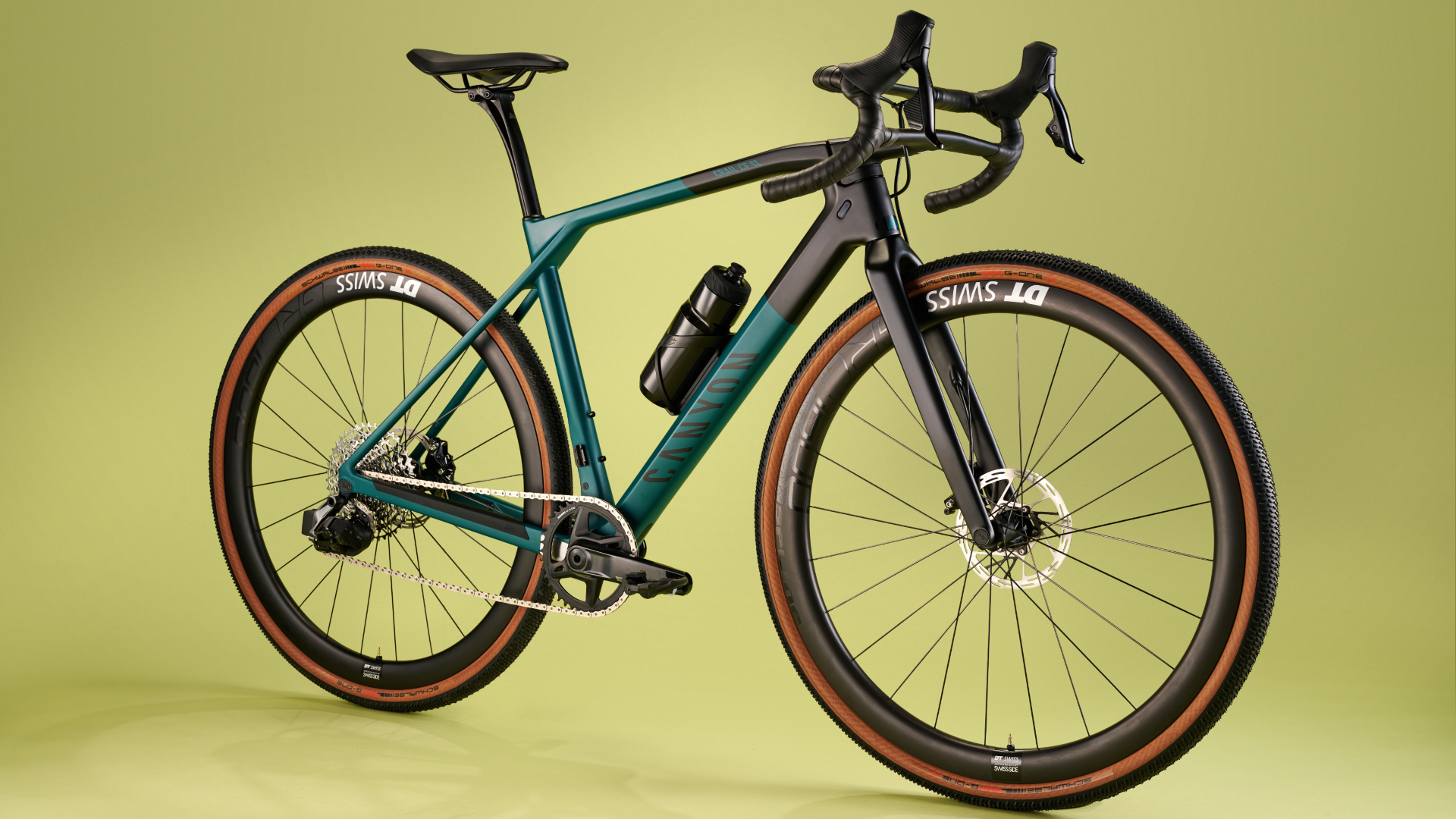
Although quite an eclectic mix, Canyon's varied design elements do all work very well together. With little more than a change of tyres, you can switch from bikepacking to racing and back again. But although its applications are certainly versatile, the handlebars are something you're stuck with – be sure that you are happy with the double-decker design before buying, as there's little scope for swapping them out later.
-
+
Nice riding position
-
+
Bags of comfort built in
-
+
Solid DT Swiss wheels
-
-
Impractical handlebars
-
-
Location of seatpin bolt
You can trust Cycling Weekly.

Every time I read about a do-it-all bike that can tackle any terrain and be ridden all year round I can’t help but think of the line from the Lord of the Rings; “One ring to rule them all.” But can one bike really rule on all terrain?
Is it possible to be fast and efficient on the road, whilst also being able to handle the rough stuff – and being comfortable enough to ride all day while loaded down with bags and kit? Or is this a load of marketing nonsense and the sooner the idea is thrown into the fires of Mount Doom the better?
Canyon’s attempt at this holy grail is, well, the Grail. Or to be precise, the $5,249.00 / £3,499 Grail CF SL 7 eTap. A gravel bike that seems from the outset to be a varied selection of parts, design and equipment that look like they should have no place on the same bike at the same time.
Why have a lightweight, full carbon frame with aero front end if you’re going to stick huge great 40mm knobbly tyres on it? Instead of having a flexible seat pin, why not have a more forgiving frame design?
A bike of contradictory parts, but maybe, just maybe they might all fuse together and surprise me in making up one of the best gravel bikes.
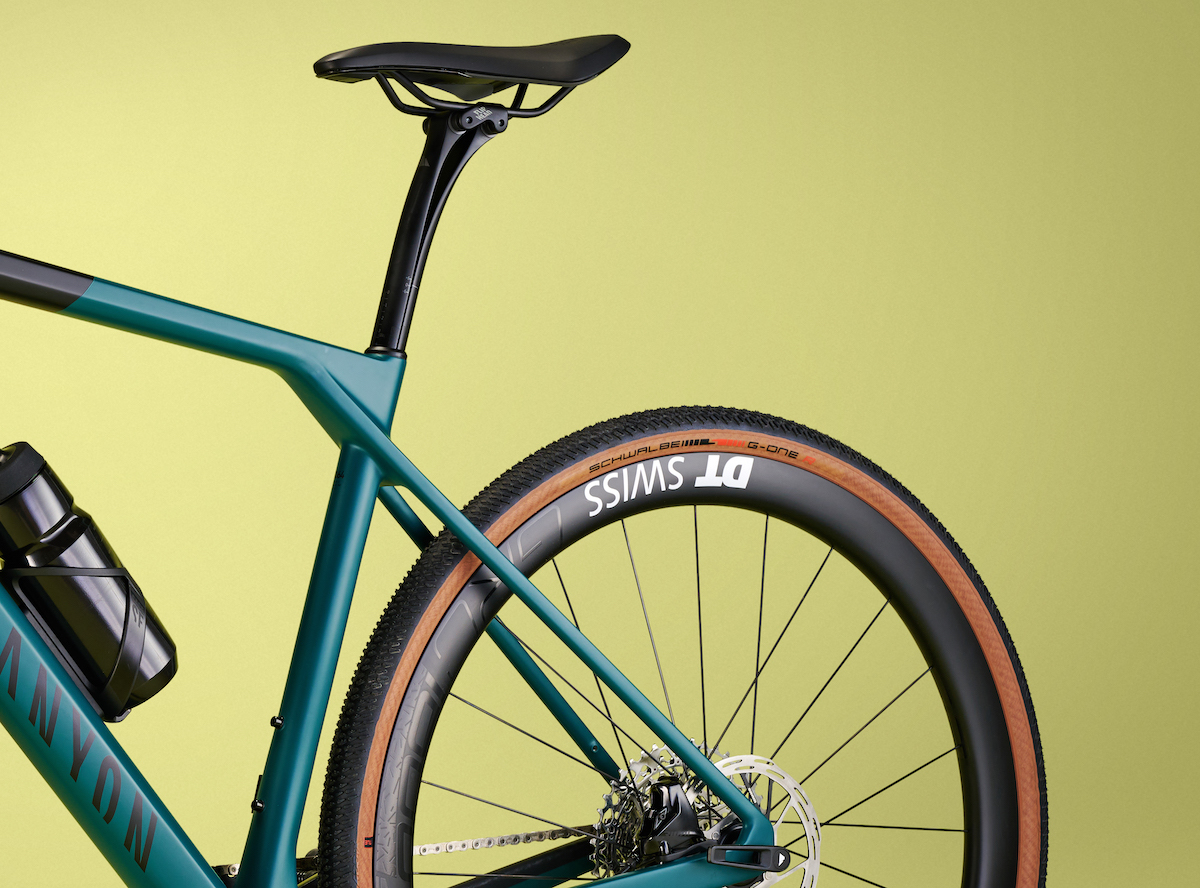
There's a lot of comfort built into the rear end of the Grail
Setting up the Canyon Grail
Whenever I test a new gravel bike I don’t fret over getting the setup 100% right before riding it. I’ll do the saddle height on sight, give the tyres a squeeze and adjust if necessary, and of course double check the bars and stem are done up tight.
But I like to figure things out, and fiddle with the bike as I go. Discovering a few niggles and then finding out how easy they are to solve is in my opinion a good way to get to know a new bike. Just so long as I remember not to give too much credence to my first impressions.
The first impression with the Grail was one of sluggishness. No problem though. I had to keep in mind that I’d just finished riding an S-Works Crux, which was as fast as any road bike I’ve ever ridden, and the Grail is a different kind of bike. Although Canyon does claim it feels like a road bike when on asphalt.
In large part this sluggishness was down to the mtb’esque 40mm Schwalbe G-One knobbly tubeless tyres it came with. Even after topping them up to around 30 PSI they still felt too soft. So much so that at times I had to check the amount of bounce underneath my bum wasn’t a puncture.
What I was feeling was the combined movement from two thirds of Canyon’s ‘complete comfort concept’ which refers to the main touch points on the bike and the flexibility built into them. Namely the tyres and the flexi-post, as I called it. There is an incredible amount of cushioning in both of them. The third part is the handlebars which we’ll come to later.
Eventually I went up to around 35-40 PSI in the rear tyre which to me feels quite high for off road riding. The G-ones however have a maximum pressure of 72 psi which is only 10psi lower than a set of 28mm Goodyears I just set up on some new Zipp 858s.
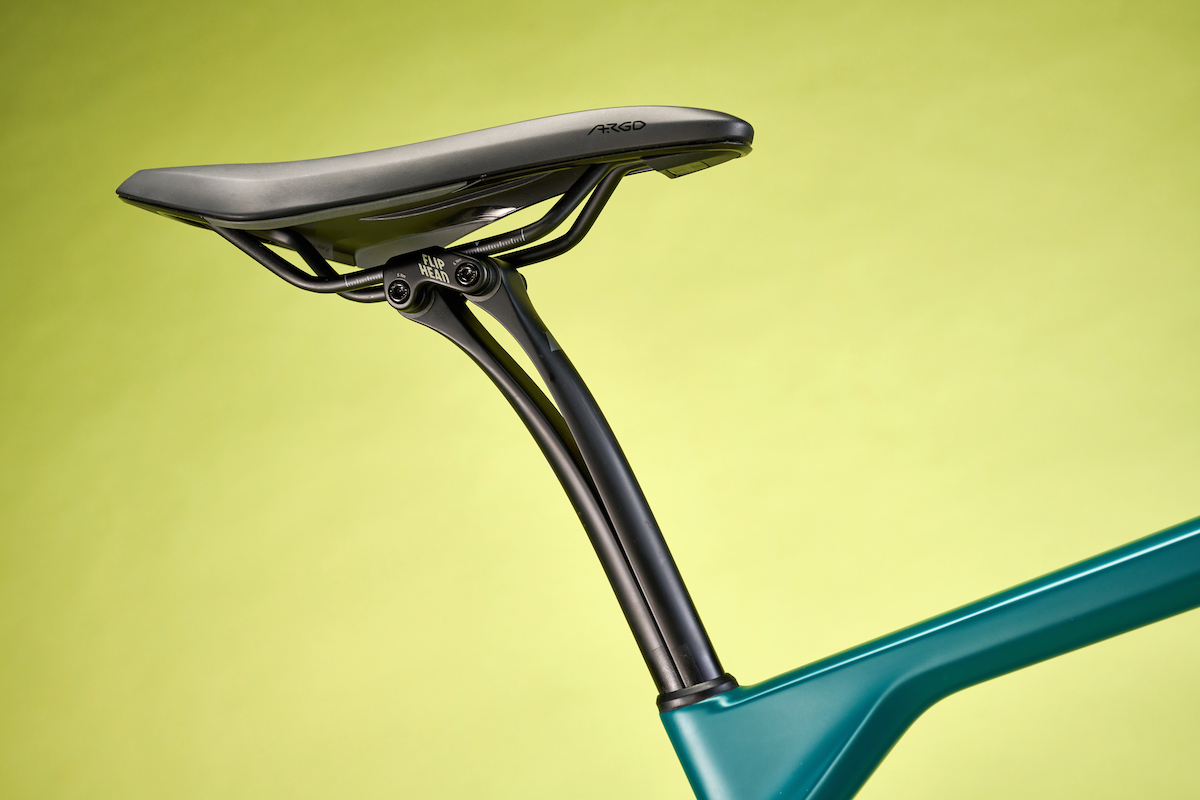
The Grail's split seatpin dials up the comfort
Your preferred pressure will be down whether you're using the best gravel bike tyres, the terrain you’re riding, your weight and riding style, and how soft or hard the ground is at the time. But I did feel I had to pump them up harder than other tyres I've ridden. But even with higher tyre pressures there was plenty of movement in the Grail’s 27.2mm flexpost to give me the cushioning I needed.
It’s actually a two-part pin with a screw (that can slide up and down a few millimetres on washers) holding them together at the bottom. At the top a hinged Flip Head saddle clamp allows the saddle rails to move with the post. Up to 20mm according to Canyon's website.
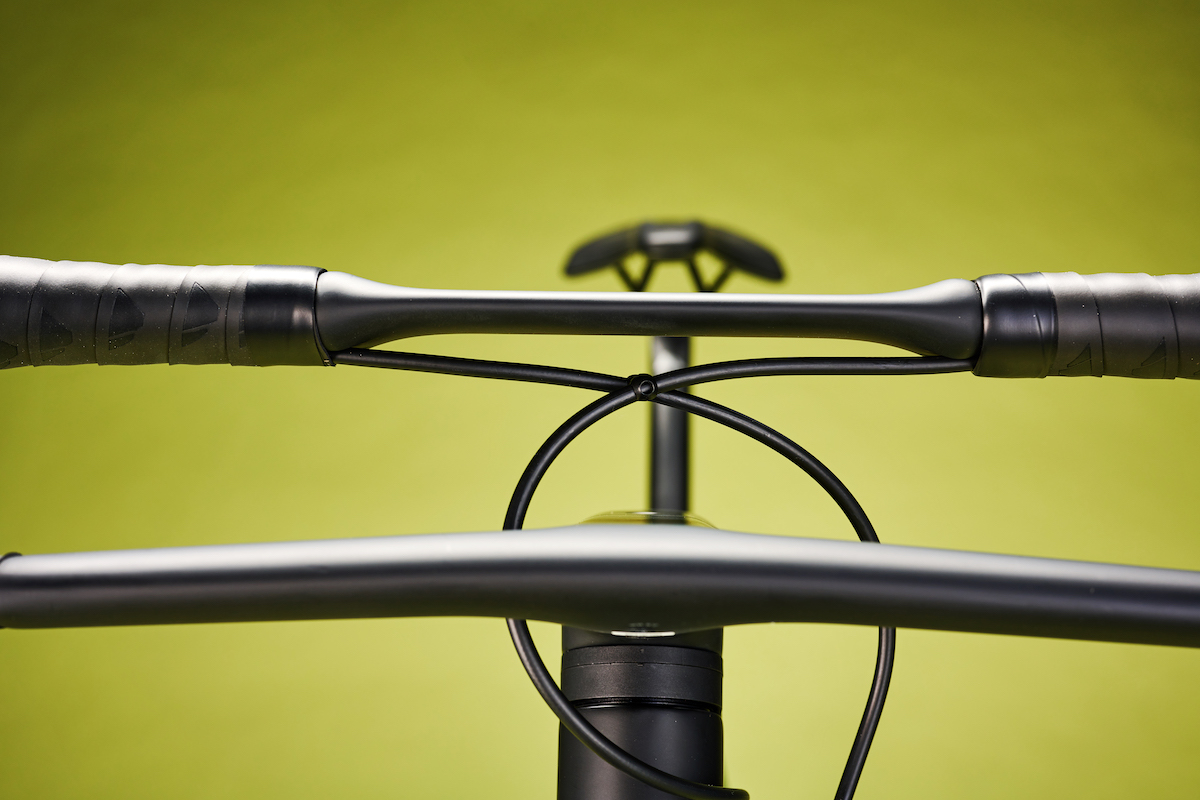
Double decker handlebars did not impress us
Part three of Canyon’s comfort concept didn’t make so much sense to me. Their double decker handlebar is meant to provide more flex and comfort for your hands and arms, but rather than adding flex I couldn’t help think that an extra horizontal bar makes the whole structure more rigid.
The top bar is marked with a flex zone, a nine centimetre section right in the middle, where I would never place my hands for riding. A normal hand position on the drops is not in this ‘flex zone’ and doesn’t feel any different to a normal set of bars, while on the drops the lower bar impeded my hand position.
The lower horizontal bar joins the drops right where I wanted my thumbs to be when on the drops and needing to cover the brakes. I had to bend my wrists into an uncomfortable position and my thumbs quickly cramped up. I never once held on to the lower bar while riding, it pitched me too far forward and felt unstable.
The bars also lose marks for practicality. The narrow wing profile means lights wouldn't sit comfortably and I struggled to attach a bar bag. The lower bar got in the way meaning the Velcro strap that should go round the head tube couldn't reach. It wouldn't go on the lower bar as it's too close to the top of the tyre. Computer mounts would need to be of the variety that screw into the bolts, 40mm apart, underneath the stem.
Canyon will sell you one for £31.95.
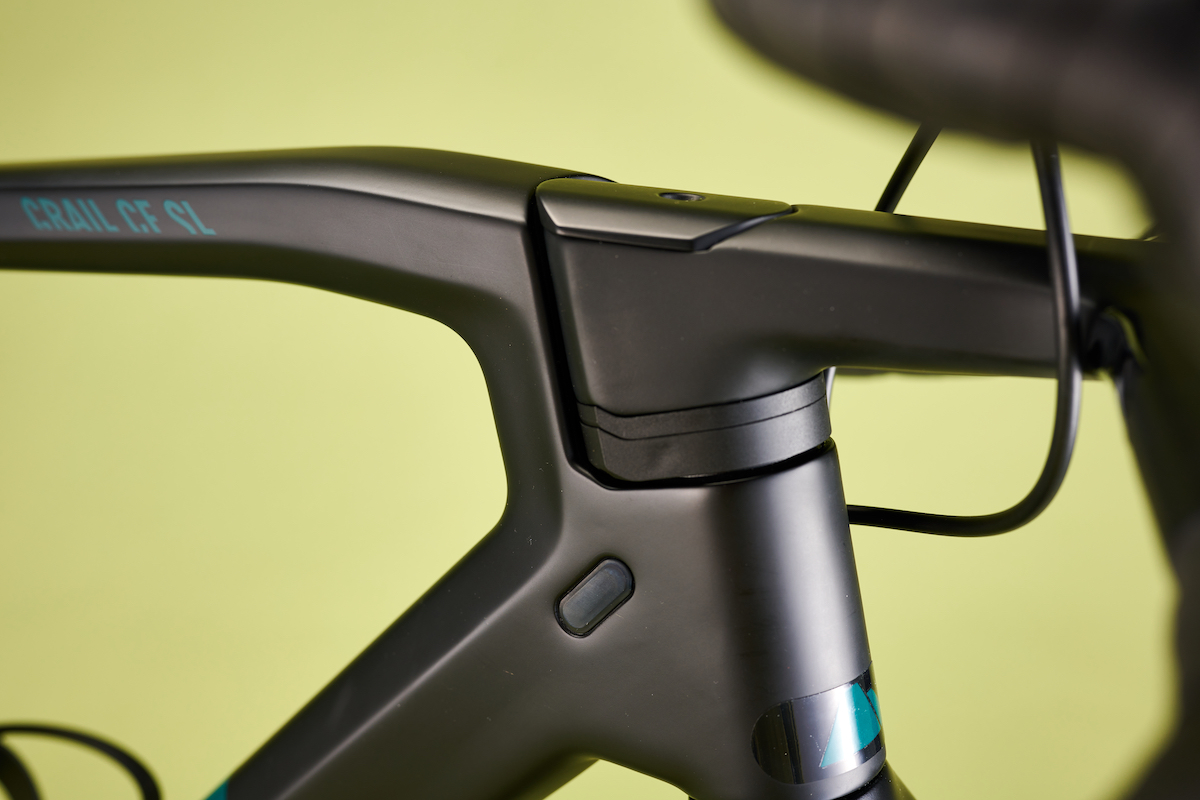
The integrated stem looks neat, and works well, but can't be changed if these bars aren't your preference.
Sadly for anyone wanting this bike with any of the best gravel handlebars and stem, it’s not possible. The one piece setup sits perfectly in the frame with only a few mm to spare, meaning a standard stem isn’t usable. If you want this bike you’re stuck with these bars, so you need to make sure you get on with them.
On the subject of impractical things, we need to talk about the seatpin bolt, or grub screw as has been used here. It’s been placed at the back of the seat tube in between where the seatstays merge. Meaning any hex key will only get a quarter of a turn in before having to take it out and reposition it.
Worse still, it’s down below the top of the rear tyre, so there is no room in which to put the longer arm of a big hex key and get a full turn. You could argue that once you’re set up you won’t need to use this that often, but it's about the worst place to put it.
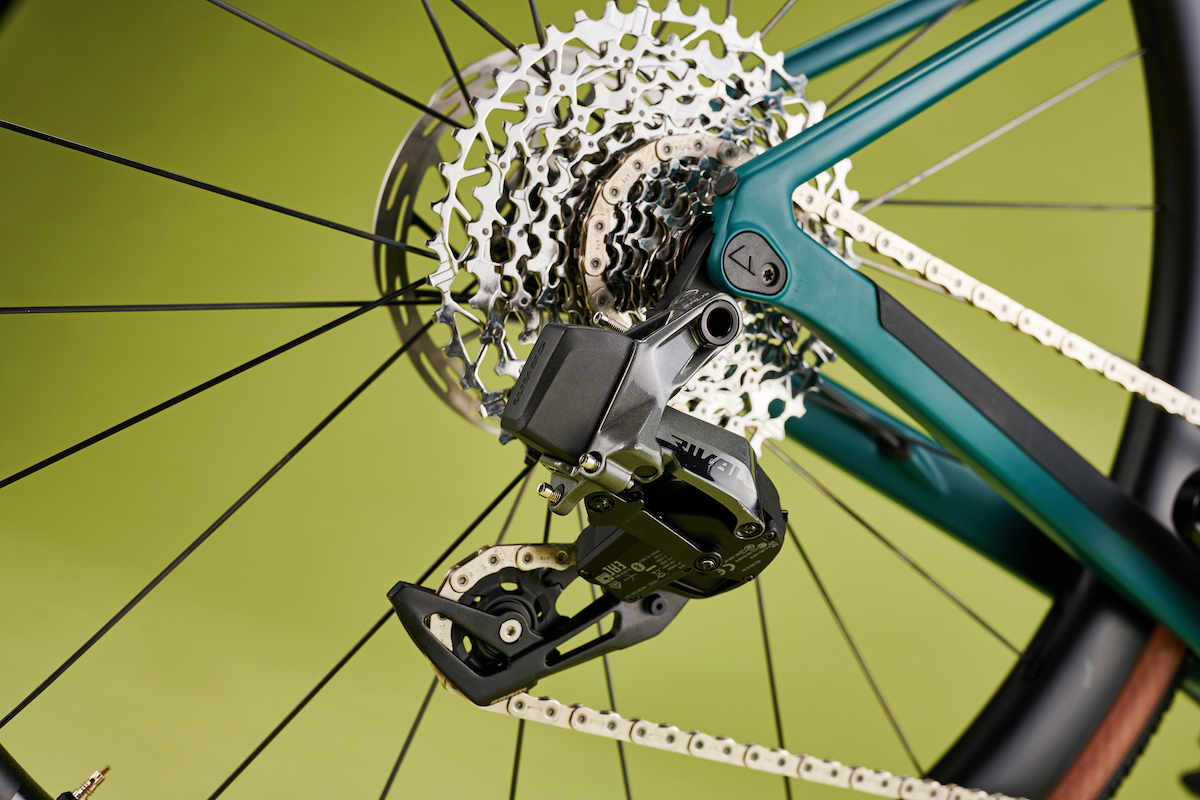
My love of single chainrings on gravel bikes is well documented. The lack of fuss and the knowledge that you can go to either end of the cassette without worrying about crossing the chain, is a boon. It simplifies your decision making when it comes to gear selection with just one button on one side for up, and the other bottom on the other side for down. And it means there’s one less thing to worry about getting clogged up with mud.
What's more this Rival groupset works as well as a Red group I was using on another bike. Of course you can set it up with SRAM’s Axs app allowing you to change settings, but it works perfectly well straight out of the box with a couple of simple set up steps to follow.
My only one tiny grumble with Etap is the difficulty of activating the gear change button when descending with hands on the drops. I couldn’t cover the brakes and change gear at the same time without contorting my fingers and grip. A minor issue though. On the whole I can’t really fault it.
Riding the Canyon Grail
After a few set up rides getting to know the bike it quickly became my go to bike if I had an hour spare to ride. I’d chose it over the road bike partly because an hour's unstructured ride is about enjoying myself, and that’s exactly what I did on this bike.
I love the riding position, dynamic like a road bike with my hips at the correct angle, but with a slightly higher, slightly more head-up ride position. Especially on the hoods. That gave me confidence over rough terrain, while I could get low enough on the drops to get in a tuck for those moments when I wanted to push on and get somewhere quickly.
It’s fast and responsive thanks to the frame and bombproof u-shaped (33mm wide) DT Swiss deep section wheels, but also comfortable enough to ride all day.
If it’s all day riding you’re interested in be warned there are few attachment points for bags and only two bottle cage mounts, meaning you’ll need luggage that strap on, rather than bolts on.
Set the Grail up with the right tyres and with the right bags this really is one bike to rule them all, if you can live with those bars.
Value
At $5,249.00 / £3,499, the Grail CF SL 7 eTap does undercut the Specialized Crux Expert, which comes in at $6,200.00 / £6,300.00 is also specced with a SRAM Rival groupset. The Crux Expert build is lighter, though, and the bars/stem are a traditional two-piece set up.
On the other hand, Scott's Addict Gravel 20 – also with SRAM Rival, although with in-house wheels rather than DT Swiss like the Canyon – comes in rather cheaper at $4,499.99 / £2,999.00. The handlebars are one piece, but there's no double decker layout to worry about.
Verdict
It took a little while to get used to this bike, but continuously adjusting the tyre pressures eventually led to a ride that felt efficient on the road and in control off-road all while the comfort concept gave oodles of, well, comfort.
After all that tinkering I came to the conclusion that Canyon's mix of design elements all work very well together, resulting in a bike that you could race or go bikepacking on with little more than a change in tyres and tyre pressure to dial the ride to what you need. Make those changes and this bike could be pretty much whatever you wanted it to be.
However, it is let down by those bars. They’re fine riding on the hoods and the tops, but I gave up riding on the drops for any length of time. It's a struggle to fit bar bags and lights. I know they’re Canyon’s ‘thing’, but they haven’t caught on in the rest of the industry, and there's probably a good reason for that. I didn’t mind riding on them, but if this bike was a long term investment for me their impracticality would be an issue. The fact they’re integrated with the frame and therefore not an easy swap means you should only buy this bike if you like these bars, because you’re stuck with them.
The placement of the seatpin bolt makes adjusting the saddle fiddly, that may be nothing worse than an annoyance but in my opinion a needless mistake for a manufacturer to make, especially one of Canyon’s size and pedigree.

Thank you for reading 20 articles this month* Join now for unlimited access
Enjoy your first month for just £1 / $1 / €1
*Read 5 free articles per month without a subscription

Join now for unlimited access
Try first month for just £1 / $1 / €1
Get The Leadout Newsletter
The latest race content, interviews, features, reviews and expert buying guides, direct to your inbox!

Editor of Cycling Weekly magazine, Simon has been working at the title since 2001. He fell in love with cycling 1989 when watching the Tour de France on Channel 4, started racing in 1995 and in 2000 he spent one season racing in Belgium. During his time at CW (and Cycle Sport magazine) he has written product reviews, fitness features, pro interviews, race coverage and news. He has covered the Tour de France more times than he can remember along with two Olympic Games and many other international and UK domestic races. He became the 130-year-old magazine's 13th editor in 2015.
-
 'This race is absolutely disgusting': Peloton reacts to another brutal Paris-Roubaix Femmes
'This race is absolutely disgusting': Peloton reacts to another brutal Paris-Roubaix FemmesNow in its fifth edition, Paris-Roubaix Femmes is still a tough race, even for the best bike riders in the world
By Adam Becket Published
-
 ‘It’s the biggest win of my career’ says João Almeida after crushing Itzulia Basque Country success
‘It’s the biggest win of my career’ says João Almeida after crushing Itzulia Basque Country successUAE rider wins the final stage to finish almost two minutes clear of Enric Mas on GC, with Max Schachmann in third
By Peter Cossins Published
-
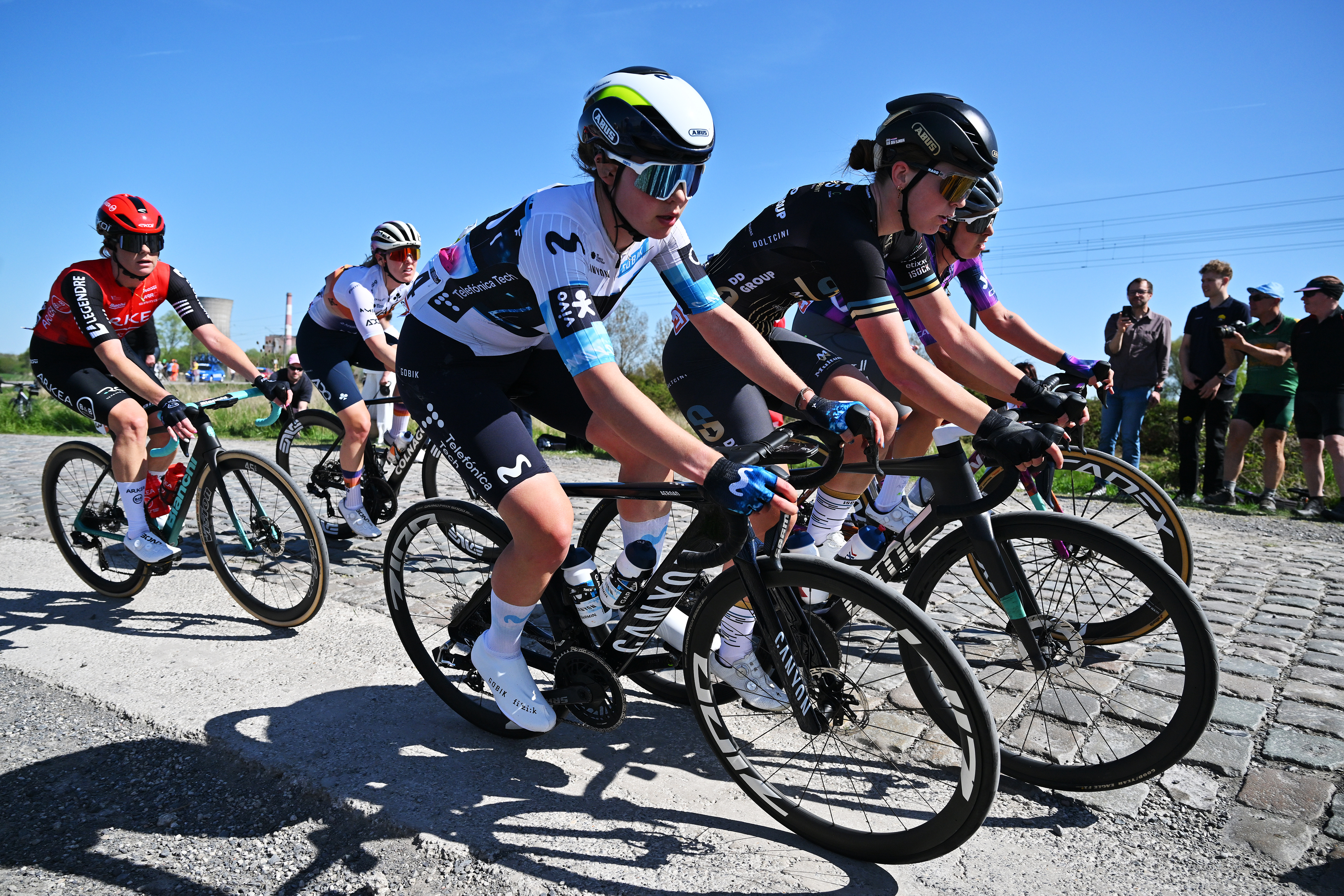 'I have an exam in a month and a half' - Carys Lloyd becomes Paris-Roubaix's youngest ever rider
'I have an exam in a month and a half' - Carys Lloyd becomes Paris-Roubaix's youngest ever riderBritish teenager and A-Level student makes it to the velodrome on debut
By Tom Davidson Published